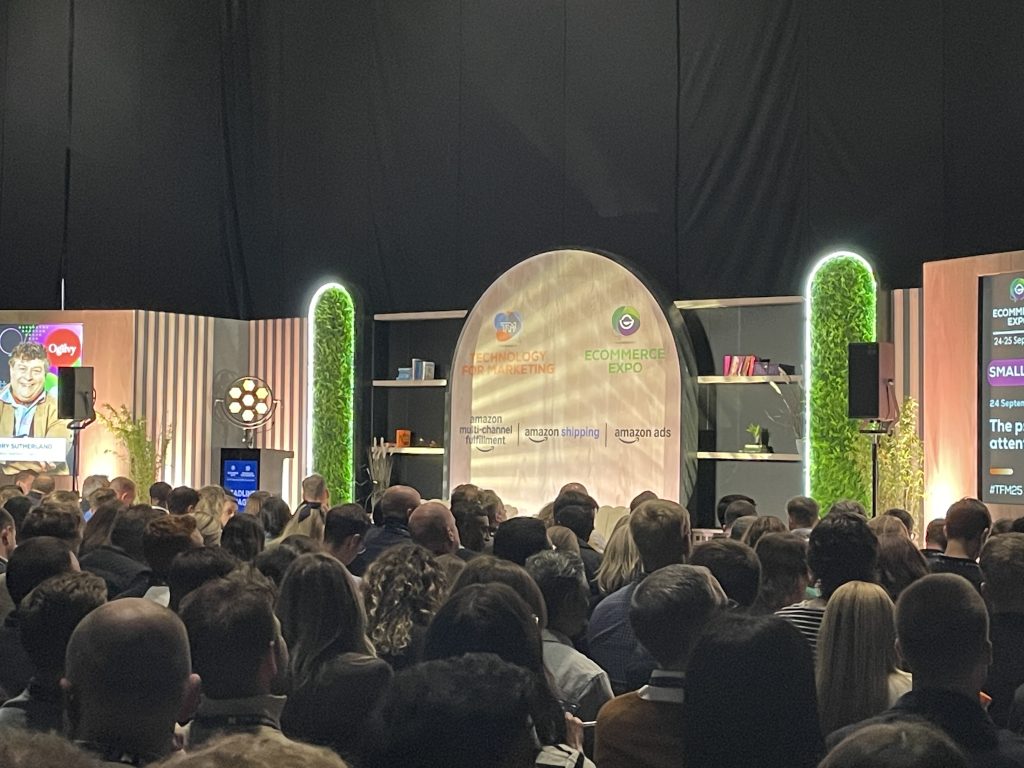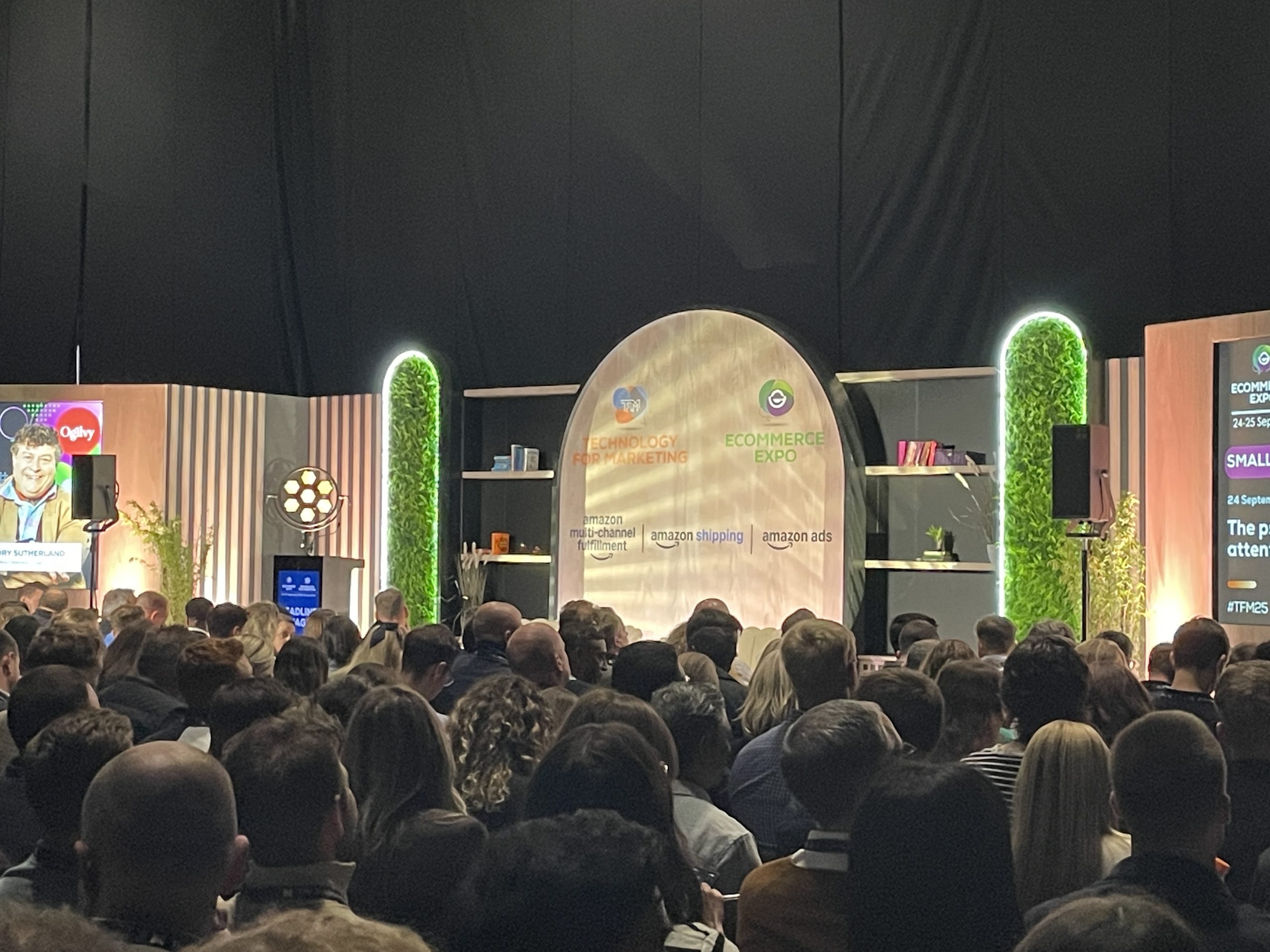
At Creative CX, we are lucky to work with a lot of eCommerce clients, so I was particularly interested to attend the eCommerce expo 2025 to learn current industry trends and expand my own understanding of the marketing world.
Over the two days, I attended fifteen talks, met with a number of companies, and explored new and interesting technologies on the stands.
While there was a wealth of marketing software and AI discussions, the three themes that stood out to me personally were around checkout abandonment, customer loyalty (particularly in relation to the growing Gen Z and Gen Alpha markets) and the importance of UX and personalisation.
Checkout Abandonment
Colin Tate from Labara, Maxwell Alderton from Peter Christian, and Matthew Walsh and Andy Mulcahy from IMRG all discussed the persistent issue of checkout abandonment, and what might incentivise consumers to stay.
Across their talks, it became clear that customers tend to abandon the cart or checkout due to a lack of trust, unexpected delivery costs, or general friction within the process.
This leads to £18 billion in lost revenue each year in the UK.
To address this, it’s important to segment out our audience to understand who may be struggling, and where.
Exit surveys can unlock key insights, while analysing behaviours of customers who do complete purchases can help create stronger predictive signals.
There are also some “quick wins” to employ – simplifying the form as much as possible, optimising for mobile, and employing trust signals to reassure hesitant customers.
I also noted how many of these issues came down to a lack of transparent information, such as not making customers aware of delivery costs upfront, the available payment methods, or neglecting visible security certifications.
Given the upcoming peak period, particularly with an awareness of black Friday, it’s important to pay attention to these signals now, in order to capitalise on this increased traffic.
Customer Loyalty
Rob Watson and Oscar Strachen from Columbus and Juliette Aiken from Dotdigitial discussed the importance of customer loyalty and understanding the priorities of different customer groups.
In general, modern customers are looking for experiences which are personal, purposeful and convenient.
However, what this looks like differs between generations, and it’s important to understand how best to serve your target audience.
Millennials are generally driven by price and convenience, whilst Gen Z are more interested in sustainability and ethics, and Gen Alpha are looking for novelty and peer approval.
In contrast, Baby Boomers are looking for simplicity and established reputations.
Not only do these generations differ in what they look for in a brand, but also in how they express loyalty. This matters because loyal customers typically spend more, return more often, and are more likely to repurchase.
However, while Baby Boomers have strong loyalty to certain brands, Gen Z and Gen Alpha are much less loyal (not having had the time to form those bonds).
The method of loyalty incentivisation also differs between generations, aligning with what each generation is looking for in a brand.
Boomers prefer points-based schemes which they can build over time, and are particularly drawn towards free returns.
Similarly, Gen X are most incentivised by delivery incentives and discounts.
Millennials are less drawn to these methods, instead reacting better to scarcity or popularity messaging, and are in fact most likely to boycott a brand based on misaligned values.
There is then a noticeable change, with Gen Z being more selective – swayed by gifts and freebies over points, and Gen Alpha ultimately being most swayed by social media and digital influences.
Given these differences, it’s unrealistic to optimise loyalty for all visitors. Instead, it’s important to identify your target audience and adjust your loyalty programme accordingly.
Across generations, human connection and authenticity remain key – as do transparency, sustainability, and an effective omnichannel presence.
Reviewing your current demographic and testing alternative loyalty models can uncover new opportunities for retention and advocacy.
UX and Personalisation
The final trend I noted, similar to the previous points, was the importance of UX and personalisation in driving Conversion. This was primarily covered by Serkan Ayan from Tesco and Amy Essex from Virgin Media O2.
Both Amy and Serkan discussed the importance of data and research in experimentation, and the benefits of testing.
Serkan highlighted two different paths of testing – Generative to generate ideas, and Evaluative to determine the benefit of these ideas.
This evaluation is done through a combination of UX testing, A/B testing, and evaluative feedback.
Serkan’s takeaway message was that UX works best when it goes unnoticed – on a website, you don’t note when things are working well, but it’s very obvious when they’re not.
Similarly, while some may regard UX as slowing down releases, without it you may run into more frustrations and reduce customer trust.
Amy’s talk worked well to support the importance of testing ideas, with Amy highlighting the balance between velocity and discovery.
Amy’s talk particularly resonated with me as she discussed a common issue with growing experimentation teams – the fear of failure.
While a high velocity can be good, when this leads to a low amount of significant tests it isn’t necessarily beneficial.
When Amy saw this phenomenon at Virgin Media O2 she changed the narrative, focusing on ‘impact’ rather than wins or tests.
By doing this, she was able to empower her team to take bigger risks, as even failed tests contributed to their impact target.
This led to great wins, and more importantly, greater learnings.
They also began to focus on key areas, iterating and learning more within a short period of time than they would have otherwise learnt.
Conclusion

The eCommerce Expo 2025 offered many interesting learnings and it was fascinating to compare traditional eCommerce challenges with those in experimentation.
Despite differing terminology, the underlying principle remains the same: understand your audience and design experiences that meet their needs.



